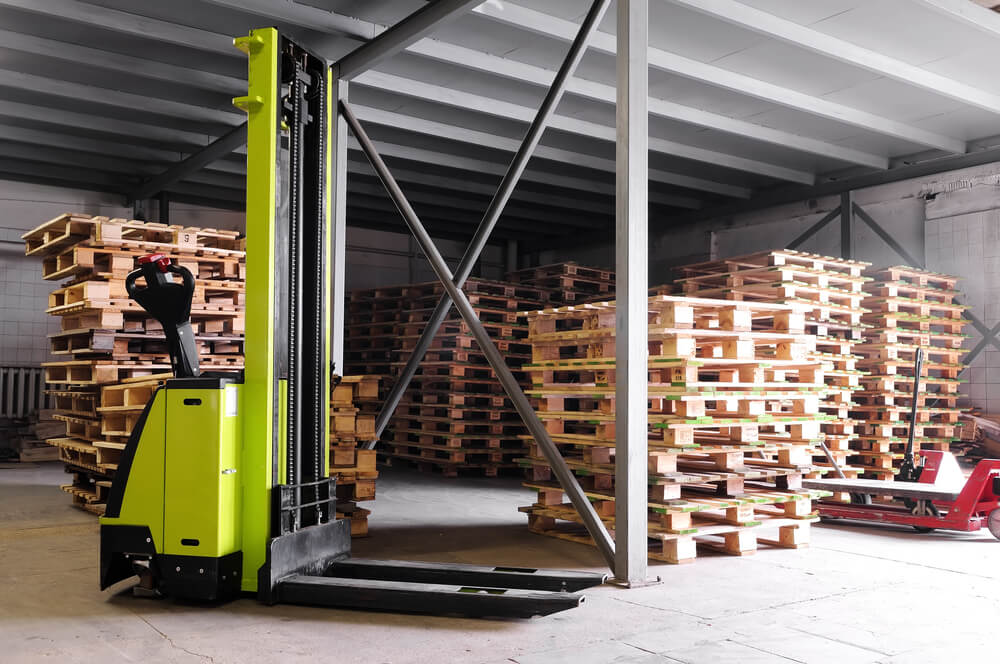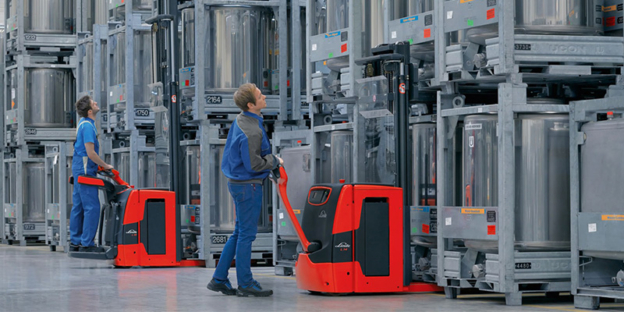A stacker, also known by multiple names such as stacker trucks, electric stacker, pedestrian stackers, etc depending upon manufacturers, can basically be thought to be younger versions of forklifts. They are one of the most commonly found material handling equipment & warehouse equipment in factories and warehouses. They are used to lift and move pallets of goods and to load and unload them at heights.
As compared to a heavy duty diesel forklift the stacker is an ideal choice for operating in smaller and confined spaces dealing in lightweight materials. Some models are used to move un-palletized goods like machine parts, boxes, drums, and cartons. Although forklifts are suitable for heavy-duty operations, when it comes to parking space, stackers occupy lesser area than say, a diesel forklift. Stackers come in a wide range from hand-operated and hydraulic to electric stackers. While stackers sound all good with so many options to choose from, there are certain factors you should be aware of before going ahead. Below are a few points that might help in your purchase decision.

Weight-bearing Capacity
Probably the first criterion in your checklist, you must determine the weight to be borne by your stacker on a regular basis. Stackers come with different capacities for you to pick an apt one. A stacker, starting with a load-bearing capacity of 1 Ton, is good enough for small to medium weight product stacking. While a higher capacity should be sought as the load increases.
Power Stacker Height
Your warehouse would have a certain height up to which you may need to stack your load. Choose one which could reach the maximum height. If you need stocking to be done a little over the ground level, then go for the stackers as high as 127”. The highest lifting height of your stacker is affected by the type of masts. Most Stackers feature fixed masts. When higher lift heights are required, a telescopic mast may be necessary. Telescopic masts have an inner mast nested within the outer mast channel. When forks are raised to a height higher than the capacity of the outer mast, the inner mast rises to provide additional lift height akin to a camera lens zoom mechanism.
Manual or Electric
This is not a very tough choice really as the benefits of electric stacker far outweigh that of a manual one unless your needs are very basic. Manual pallet stackers can feel a bit archaic and require more strength to operate as compared to the Electric stackers which can be raised and lowered at the press of a button. Also, you get a display panel indicating various parameters such as battery status, truckload, etc. Unless your requirements are very modest and you want to spend on labor and time instead of technology, the advice is to go for an electric one.
Other factors to consider before buying
- The physical nature of goods to be lifted and moved.
- The kind of pallets is being used for palletized goods.
- The height of pallet racking beams, shelf heights, loading vehicle heights or heights of other loading/unloading points.
- Frequency of operating the stacker in a day.
- The stacker traveling distance and any gradients to negotiate.
- Type of floor used by the stacker for operating.
- Exposure to physical perils such as wet surface, corrosive elements, extreme weather conditions, etc.
- Stacker operating knowledge of your workers.
- Height and width restrictions that need to be considered eg: doorways, overhead obstructions, ceilings, etc.
- Provision for charging socket points nearby to charge the battery.
- And finally, your budget!
Keep in mind the above and your purchase is sure to be an intelligent decision!
